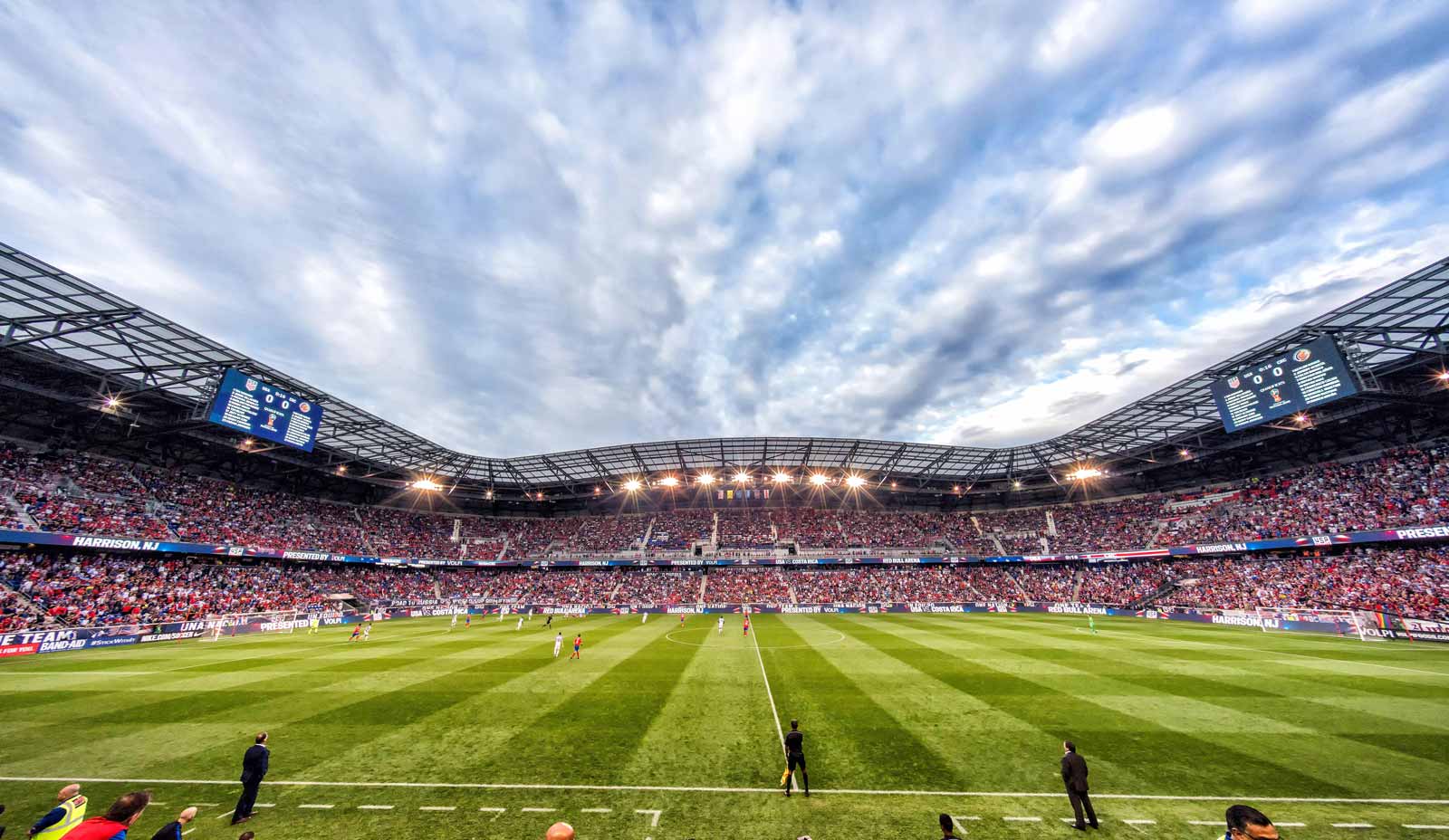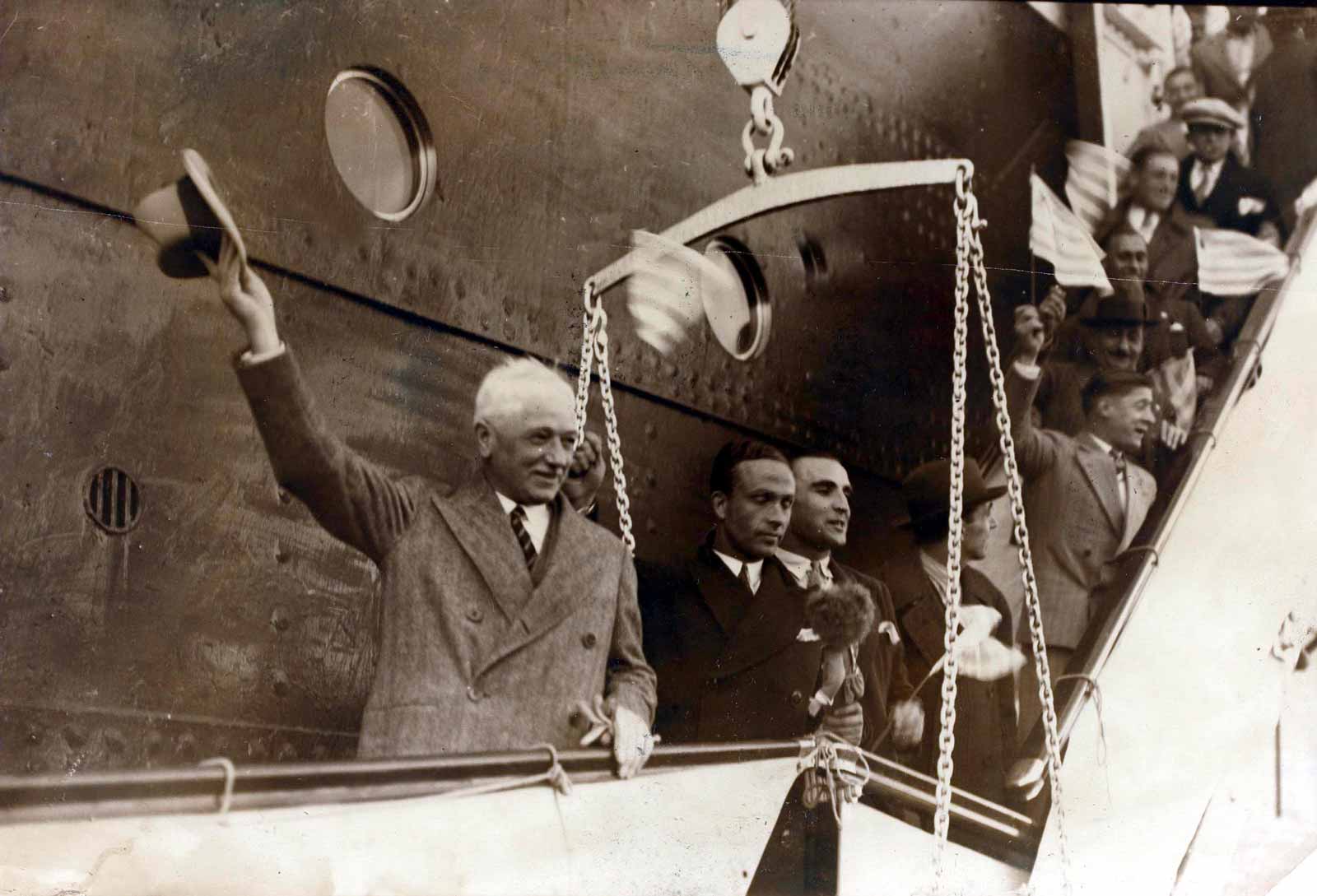This is the first in a series of essays about the 2018 World Cup guest-edited by Joshua Jelly-Schapiro.
It was after the 1928 Olympics in Amsterdam that Jules Rimet decided enough was enough. The French president of the Fédération Internationale de Football Association (FIFA) had watched the sport he oversaw attract more spectators at those Games than any other event—despite, to his long-running frustration, the banning from participation of professional players. Rimet moved decisively to create a new international soccer competition, run by FIFA and called the World Cup, in which each nation taking part would field a team comprised of its foremost footballers, bar none.
A date was set, and Uruguay—a country then flush with Jazz Age wealth from grain and leather—was chosen to act as host because its government offered to pay travel costs for all involved. Rimet commissioned the sculpting of a small golden trophy for the winner. And then, placing that trophy in his bag, he boarded a boat for Montevideo, together with three of the four European nations that, in the summer of 1930, agreed to take part in a tournament whose inaugural edition, to the delight of its hosts and the lasting trauma of Argentines who crossed the muddy Río de la Plata to watch their team lose the final, was won by Uruguay.
Rimet remained FIFA’s chief until 1954. He was a man of ideals and vision whose desire to create a global showcase for soccer that was open to professional players derived less from a love of money than his belief that involving the world’s best players in a quadrennial celebration of its best-loved sport would not only prove popular but, in an era that birthed the League of Nations, might also provide a unique way of channeling conflicts between countries toward, as he put it, “peaceful contests in the stadium.” He was right. Over the World Cup’s early decades, there were a few blips—notably a 1934 edition in Italy that Mussolini turned into an advert for fascism. But Rimet’s invention largely went from strength to strength, until the staging of the 1970 tournament in Mexico helped to transform his beloved sporting event into the outsized media spectacle we know today, awash in cash and global, not just in name, but in reach.
The FIFA men’s World Cup—whose 2018 edition kicks off today in Moscow’s Luzhniki Stadium with a match between its Russian hosts and Saudi Arabia—remains a potent symbol of athletic comity and joy, but it has also become one of crass consumerism and greed. Over the next thirty days, the Cup’s sixty-four games will be seen on glowing screens by more than half the world’s population. The final match alone—expected to be watched live by well over a billion of them—will make it the most popular TV show in history. Three years after FIFA’s corruption scandals tainted the game, Vladimir Putin hopes to make its crowning event a propaganda win of mighty scale.
With the May 2015 indictment that led to the criminal convictions of several senior FIFA officials and the ousting of the organization’s president, Sepp Blatter, the US Department of Justice made plain the extent to which Jules Rimet’s heirs had sold soccer’s soul by engaging “in various criminal activities, including fraud, bribery, and money laundering, in pursuit of personal and commercial gain.” This was news to Americans, but not to close watchers of a governing body whose most influential modern president, the Brazilian potentate João Havelange, swept to power after that 1970 Cup in Mexico—the first to be broadcast live on color TV.
Havelange absorbed how people had thrilled to the beautiful play of Brazil’s superb 1970 team, resplendent in yellow in Mexico City’s Azteca Stadium, and transformed a fusty Swiss nonprofit into a colossal cash cow commensurate with how well soccer plainly lent itself to a medium then transforming modern life. Havelange monetized that appeal, with his partners in business, by selling broadcasting and marketing rights to marquee events like the World Cup to “sports marketing firms” that convinced the world’s biggest companies to become such events’ “official sponsors.” He kept the wholesale price for such rights artificially low in exchange for their buyers’ providing hefty kickbacks to FIFA officials as a matter of course. He secured and maintained his own power by sharing the graft with soccer officials from across Africa and Asia and the Caribbean, where young nations, from the 1970s onward, were swelling FIFA’s ranks of voting members.
Advertisement
This culture of corruption, as we learned after 2015, only deepened once Havelange retired, after twenty-four years in power. Vote-buying and bribes became customary in FIFA’s Zurich offices long before the infamous day in December 2010, when the organization awarded the 2018 and 2022 World Cups to two countries—Russia and Qatar, respectively—whose bids, it now seems clear, succeeded thanks largely to dark arts and deep pockets. Or so we can assume: FIFA’s own investigation into the integrity of that 2010 vote was rather hamstrung by the fact that, when the Russians were asked to produce records related to their bid, they insisted it had been carried out using rented computers since destroyed by their owner. Though over half the members of FIFA’s Executive Committee who took part in that vote were later banned or indicted, the Cup wasn’t going anywhere. And so it is that during Russia’s bright northern nights, this June and July, the world will watch matches staged in shiny new stadiums in Volgograd and Saint Petersburg and Saransk. It seems only apt, in a way, that the Cup has landed, in 2018, in a country that’s dominated headlines recently for other reasons, one deeply identified with illiberal nostalgia for the ancien regime, and at a time when many of the most hopeful global institutions from the twentieth century are under attack—not least from our own would-be czar in Washington, D.C.
Yesterday in Moscow, FIFA announced that the 2026 World Cup will be hosted by the United States, Canada, and Mexico—the first time that three countries will share the Cup. This decision was taken not by the organization’s old Executive Committee but rather after a vote involving every one of the FIFA’s 211 members. Those members’ preference for the North American bid over a competing one from Morocco may have reflected a less corrupt process than in the past. But most crucially, it reflected their enthusiasm for once again staging the tournament—soon to be expanded from thirty-two to forty-eight teams—in the world’s most lucrative market. From that Cup in eight years time, if the North American bid’s numbers are to be believed, FIFA will net a cool $11 billion.
For now, as this year’s $5 billion bonanza kicks off, the world will be watching—and Americans will join them in their millions, even though our sorry US men’s team failed to qualify. In the US, where the sports culture has long been defined by games we invented ourselves (and whose frequent pauses in play allow ad dollars to pile up), it wasn’t always like this. But in the quarter-century since Havelange brought the World Cup to the US for the first time—a first gambit to help soccer crack the American market—FIFA’s vision has in many ways been realized. In the summer of 1994, NFL stadiums were filled with fans of a different football code who were cheering the national teams of Italy and Brazil and Nigeria. And, just as crucially for the young Americans who’d grown up playing soccer but never much seen it played well—and there were millions of us by then—US cable channels like the regional sports station that I grew up watching to catch the Red Sox and Celtics started showing soccer highlights from top foreign leagues.
Twenty-four years later, millions of American kids watch the English Premier League not via tape-delay on cable, but live on weekend mornings on NBC. Our all-conquering women’s national team, thanks in large part to Title IX’s enforcement of gender equity in sports, has taught us how eleven players moving in concert, in one’s nation’s colors, can evoke a rippling human flag. Young Americans these days, their parents increasingly drawn to a game less likely to concuss their kids than American football, also sport the replica jerseys of Roma and Liverpool and Real Madrid—and follow such foreign clubs’ fortunes with an avidity suggested by a recent ESPN poll that found that for Americans aged twelve to twenty-four, watching soccer has surpassed even basketball in popularity. Americans, in other words, have now joined the world in the obsessive attention paid to telecasts of twenty-two people chasing a ball around a field—uniting us, as Jules Rimet hoped, by hailing our differences.
In Russia, Germany is the defending champion. Brazil, though they flunked out four years ago at home, still has Neymar. Some countries—Saudi Arabia, Panama—are mostly glad just to be involved. Talent-laden France and Belgium will hope to go far. Teams from soccer-rich nations who’ve qualified for their first Cup in decades—Egypt is one, Peru’s another—will live whole other dramas. Devotees of the thirty-two teams competing in Russia may dream about what it would feel like to lift the Cup, but true fans also know that it’s the experience of losing, in all its variety and pain, that most molds our affinities. A famous win, a beautiful goal, an advance beyond what the doubters predicted—the moments of joy, before the inevitable disappointments, are what fans live by. Only eight nations have ever lifted the Jules Rimet Trophy (Brazil has done so five times and Italy and Germany four times apiece; Uruguay and Argentina each got lucky twice; England, France, and Spain are one-timers). This summer, thirty-one nations will go home from Russia losers. But soccer’s propensity for producing “unjust” results—games in which the better team loses, or that are decided, even in this era of VAR, “video assisted refereeing,” by officials’ errors—is also part of its pull.
Advertisement
Few spectacles can match World Cup soccer for affirming a fatalistic sense—unless you’re German, and expect to win—that your people were born under a bad sign. To be English, in the world of the World Cup, is to gird oneself for watching your once-great nation crash out on penalties. To be Mexican is to be from a nation forever fated to reach the round of sixteen, but then get eliminated by a bad call or bad luck. Octavio Paz did write in Labyrinth of Solitude, of reveling in a country of the fucked, that “La chingada is the mother of all Mexicans.” Perhaps we can all agree—unless we’re fans of Portugal—on a loathing of Cristiano Ronaldo’s preening antics. But the World Cup looks different depending on where you watch from, as our series aims to show by featuring writers exploring the Cup’s meanings from the vantage of varied nations taking part.
Ninety years ago, Jules Rimet welcomed commerce into international soccer to launch a competition wherein, he wrote, “foundational violence is subsumed to discipline and the rules of the game.” Today, we’re living in times when rules-based approaches are being scorned and smashed—and even Rimet’s global institution has been shaken by the crass logic of cash and political exploitation by strongmen. But on the fields where World Cup teams play, and in the bars and living rooms and cafés where we get to watch, his vision persists.





